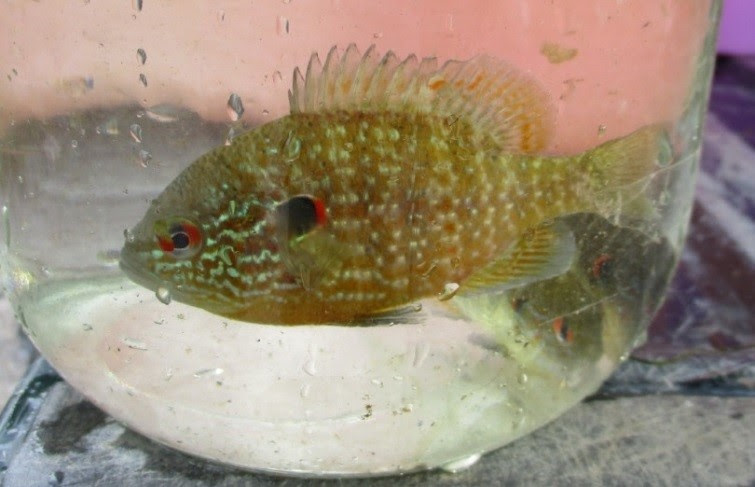Threatened Northern Sunfish Discovered in Clinton County

The New York State Department of Environmental Conservation’s Rare Fish Unit has confirmed the presence of northern sunfish in the Great Chazy River in the village of Champlain, Clinton County, New York.
In early September Biologist Doug Carlson and technician Eric Maxwell identified nearly a dozen of the threatened fish species in the river.
“We are ecstatic for this discovery and it adds to the unique species in the Great Chazy River that showcase its diversity and fishing appeal,” said Carlson.
Also known as the longear sunfish, the northern sunfish is a small, thin, deep-bodied fish that averages three to four inches in length. It is sometimes a colorful fish with an olive to rusty-brown back, bright orange belly, and blue-green bars on the side of the head. The northern sunfish has short, round pectoral fins and an upward-slanting gill cover flap that has a white and red flexible edge. It is often mistaken for a pumpkinseed sunfish.
The northern sunfish is a threatened species in New York State and it has suffered immense losses in Western New York. Biologists have speculated that several factors are involved, including interactions with non-native fish like green sunfish and round goby. The population of this recent discovery in the Chazy appears robust and quite localized.
- Vermont Fish Biologists Recapture Lake Sturgeon First Caught in 1998
- Alewives threaten Champlain salmon restoration
- NY DEC Asks Anglers to Avoid Spawning Lake Sturgeon
- Fish Stocking Underway Across Vermont
- Lake Champlain Muskie Catches Point to Restoration Progress
